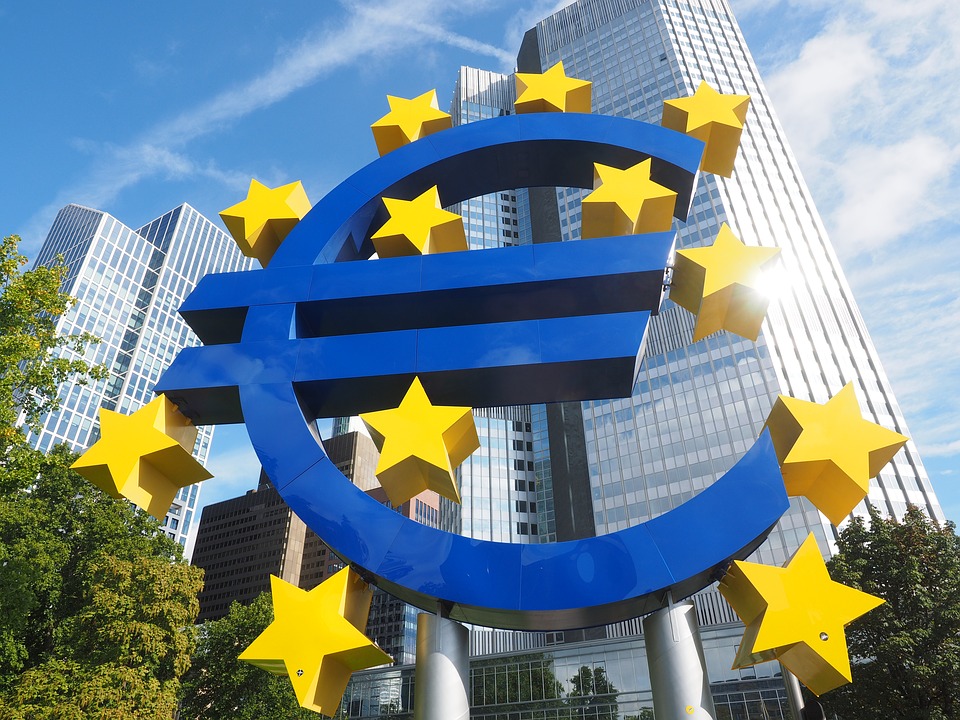Euro zone yields rise as markets near pricing in 50 bp ECB Sept hike

Euro zone bond yields edged higher on Tuesday as traders raised their bets on an interest rate hike by the European Central Bank (ECB) in September and markets sought direction on the eve of a critical U.S. inflation report. Stronger-than-expected U.S. jobs data fuelled expectations of another large, 75 basis-point (bps) U.S. rate hike in September, sending bond yields surging last week, though steep drops on Monday reversed some of that rise.
On Tuesday, bets on ECB rate hikes increased again, with traders pricing in over a 95% chance of a 50 bp hike at the bank's September meeting, Refinitiv data showed, up from around a 50% chance last week. Moves in the United States are "also helping the euro curve price another 50 bps hike from the ECB, which I think is consistent with their last decision," Antoine Bouvet, senior rates strategist at ING, said.
"(The) implication is that the market is right in expecting front-loaded hikes as the window of opportunity to tighten is closing fast." After guiding markets for a 25 bps move, the ECB hiked rates by 50 bps to 0% in July.
On Tuesday, euro zone bond yields rose ahead of U.S. inflation data due on Wednesday, which a Reuters poll predicted would show inflation remaining elevated but having slowed in July compared to June. Germany's 10-year yield, the benchmark for the bloc, was up 4 bps to 0.94% by 1024 GMT.
The two-year yield, sensitive to interest rate expectations, rose to 0.515%, the highest since July 22. Italian bonds outperformed slightly, and the 10-year yield was up 3 bps to 3.07% after underperforming on Monday following a rating outlook downgrade by Moody's. Bond yields move inversely with prices.
"We're all waiting to see what the U.S. CPI report will say. Keeping in mind that this is a lagging indicator that might not yet reflect the softening of U.S. data, we could see further flattening/inversion of the curve, also in Europe," ING's Bouvet said. The German yield curve, measured by the gap between two and 10-year yields, is at 45 bps, near its flattest this year.
A flattening yield curve is usually seen as a sign of an economic slowdown and inversions as predictors of recessions. The closely-watched two-year/10-year yield curve in the United States is deeply inverted at below minus 40 bps. Elsewhere, Germany raised 4.612 billion euros from the auction of a new two-year bond.
(This story has not been edited by Devdiscourse staff and is auto-generated from a syndicated feed.)
- READ MORE ON:
- U.S.
- European Central Bank
- United States
- Italian
- Germany
- Antoine Bouvet
- German
- Moody's
- Europe
ALSO READ
Divers discover 2 more bodies in Italian hydro powerplant explosion; death toll hits 5
Rescuers recover fourth body from Italian hydroelectric plant blast
Russia and Germany urge restraint as Iranian threat puts Middle East on edge
Death toll from Italian hydroelectric plant blast rises to five
"It's difficult to play against Italian teams...": Klopp ahead of Liverpool's clash against Atalanta










